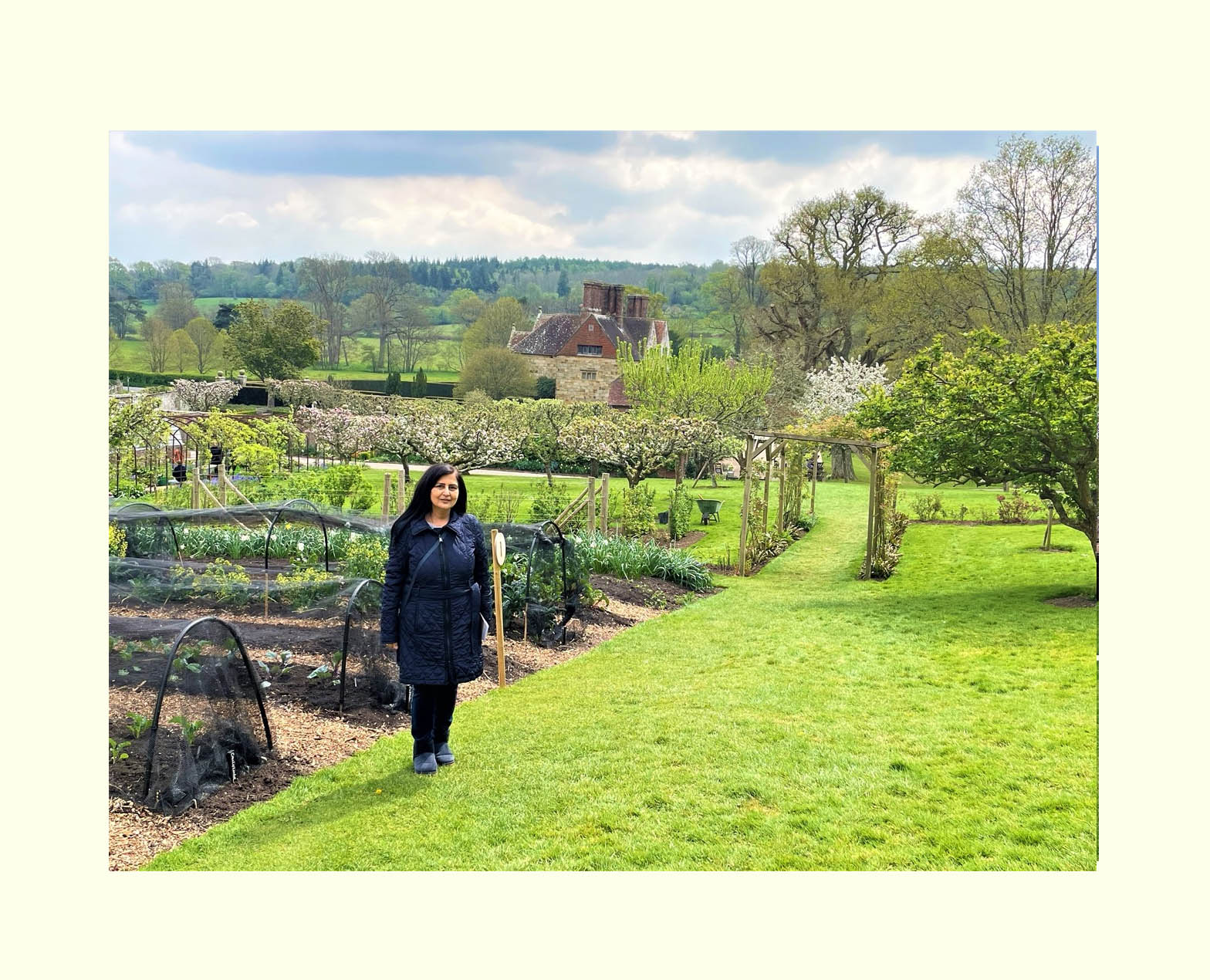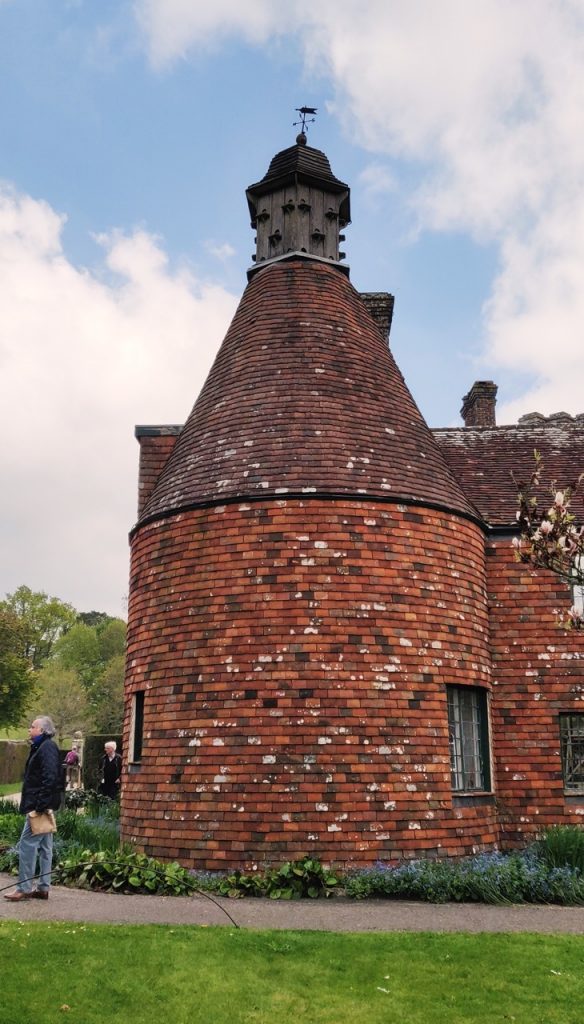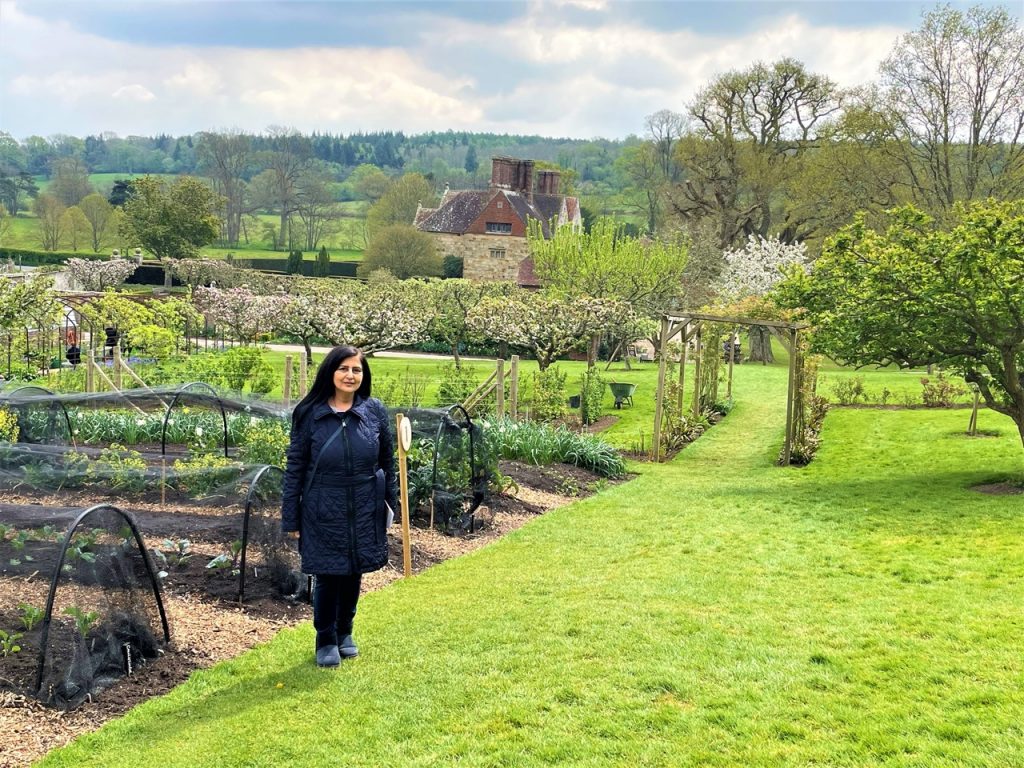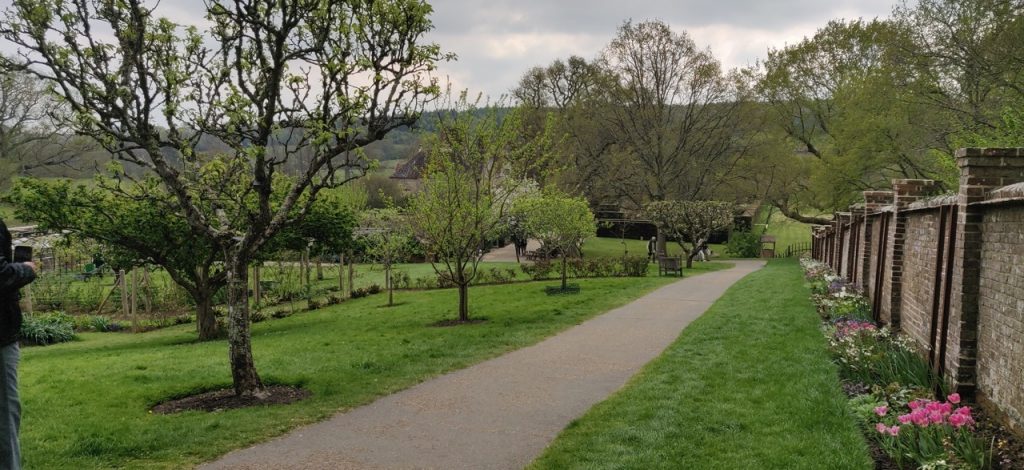Rudyard Kipling at the Emerald Gardens of Bateman House
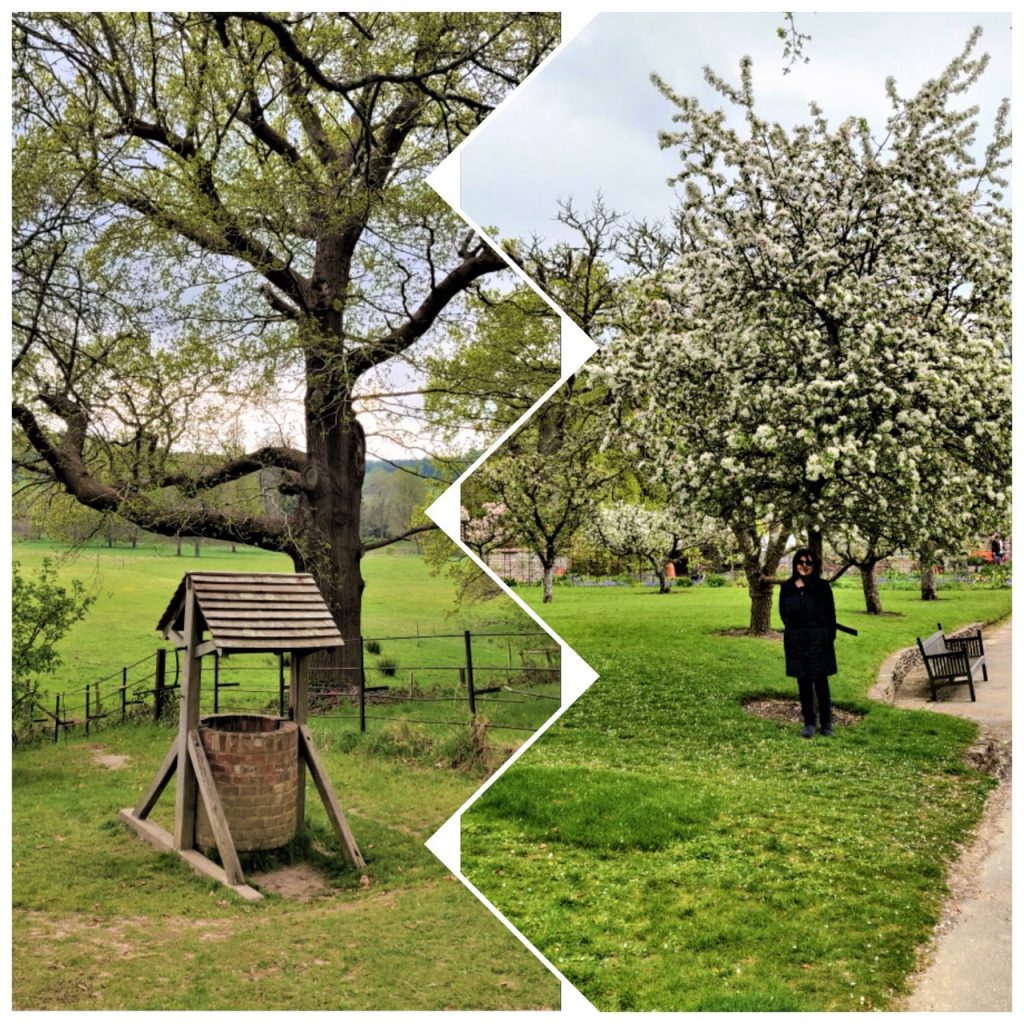
Tranquil picturesque landscapes in Kipling’s Bateman- Home that inspired his poetry written in later years.
Enveloped in greenery we walked on the path towards the sandstone built Bateman’s House from the year 1634 which was celebrity English author Rudyard Kipling’s family home since 1902 to 1939.His initial stories and books were greatly inspired by India, his birthplace, and the Indian subcontinent and it is Jungle book that gained the highest popularity- from movies to books and continues to do so! From a distance we caught the view of rows of white blossom laden trees set upon emerald green grass and a backdrop of sapphire blue sky and Rudyard Kipling‘s Jacobean style home-Bateman’s. From the car-park we had walked here and it was easy to understand the words of Rudyard Kipling when he came here in 1902 ‘he loved the place, its Feng Shui, the rooms had no shadows of ancient regrets stifled miseries nor any menace, though Bateman House’s new end was 300 years old- a real house to settle down!!
Kipling’s Rolls Royce Garage to Oast Shop
We passed the fruit trees Orchard with profusion of blossoms on apple, pear plums and black mulberry trees as well as the Vegetable plot to enter the home and having completed the tour of Bateman’s we were fascinated to explore the tranquillity of the gardens & estate that had attracted Kipling a century back! The exit led to an interestingly shaped brick Oast shop dated 1770, beautifully laid with variety of books, souvenirs, scarves, locally sourced products like jams, fudge, honey from the Garden and outdoor activity items. I stepped into the time machine to witness Rudyard Kipling parking his Rolls Royce in this Oast House, about a 100 years ago! While browsing the shop I recalled reading that Oast means kiln in old English, an agricultural building outside old homes used to dry Hops grown and harvested, a custom since 15th century! Dried Hops are part of brewing process for making beer! Oasts had a typical round shape laid with red bricks outside and a tall conical top.
Kipling’s Sketch Garden
Next we headed towards the backside of the house-past spring and summer flower borders, carefully planted in succession between March to October so that visitors could enjoy the beauty of flowers for several months! We reached the aquatic plants full rectangular Lily Pond and Rose-garden as sketched by Rudyard Kipling and visited by 19 species of Dragonflies and Damsel insects found at Bateman’s, during summer. On our left we saw attractive clusters of bluish-purple Wisteria-vines over the house-walls that caught our attention. The vivid-colour Trumpet flowers and Bumblebees were to come later in the year!
Gardens and More- Kipling’s Presence
We followed another Garden route that led us to the River Dudwell in the distance behind the flowers, shrubs and trees that led us to the striking, natural-beauty of the Wild Garden. Referring to our garden map we could make out Rudyard Kipling’s Tennis court, planted informally now. Crossing the scenic Dudwell river bridge we steered towards the walk to the picturesque openness of Park Mill built way back in the year1750 that still grinds wheat and we could buy wholemeal wheatflour at the Shop!!Kipling loved the Watermill at the edge of the Mill pond but had a turbine fitted to produce electricity! The Guide-map indicated a footpath to the Quarry garden, named so for it believed that it held the sandstone blocks used to build Bateman’s! Also, Elsie’s memorial dedicated to Rudyard Kipling’s daughter is an additional reminder of his children enacting plays here, most of them who died young!
Bateman Estate-Emerald beauty at River Dudwell
Subsequently, we began our walk backwards, over the second Dudwell Bridge and were surrounded by the 300 acres of Bateman’s Estate- a medieval area of outstanding beauty where wildflowers grow in abundance- fields & meadows of buttercups, bluebells, dandelions filled with pollinating insects & dragonflies; as one witnesses in magnificent landscape paintings. I mused that undoubtedly Rudyard Kipling’s later literary works especially poems, were inspired by these enchanting sceneries!
Mulberry Tea-room and more
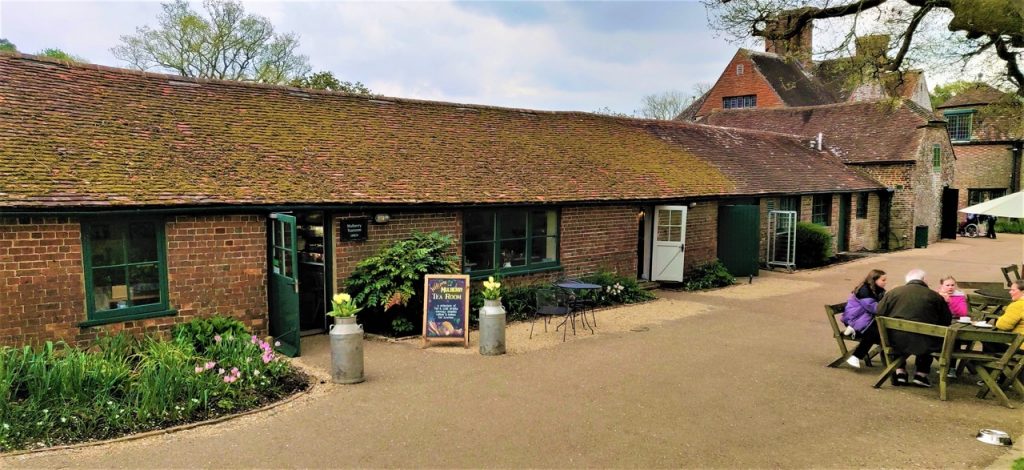
The scenic Mulberry Tea room near the Mulberry garden serving traditional English tea besides a lots more from Bateman’s grown ingredients Large
Following the red and yellow map-route we headed for the well-deserved Tea break at the Mulberry Tea room, past Bateman’s where inviting wooden benches & tables were spread for visitors to enjoy the traditional English tea with scones, clotted cream and jam besides more savouries and sweets. We discovered that the tea room adapted its name from the Mulberry garden outside it which was laid out by writer Kipling on an old farmyard. And he grew vegetables in boxlike areas with ornamental herbaceous borders that have been restored by the National Trust. Now, visitors come here to learn about the variety of flowers especially Tulips.
Spotting a metal gate with initials RK in the Mulberry garden we headed back to the car park. Consequently, we came across a Glasshouse where vegetables and annual flowers are grown from seeds all year round by gardeners of the National Trust. Around the Glasshouse is the Vegetable plot used to grow vegetables & herbs used for salads and dishes in the Mulberry Tea room- it was heartening to know the freshness!
Au Revoir
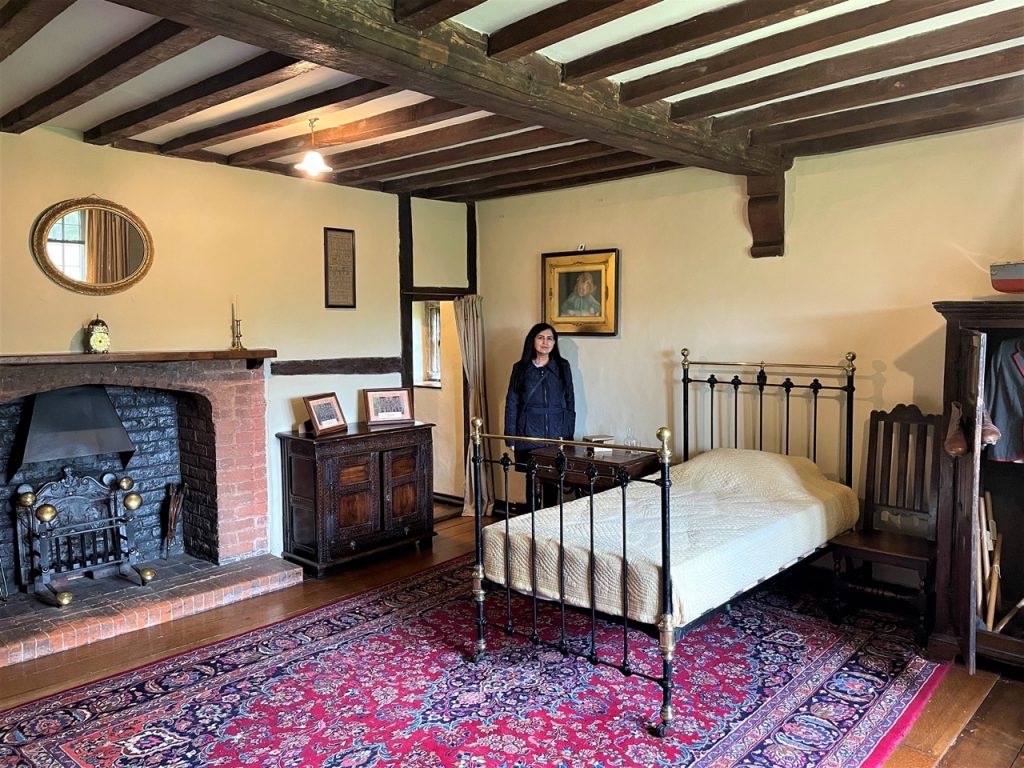
Writer in the Bateman’s bedroom of 3 times Prime Minister of Britain-Stanley Baldwin-Rudyard Kipling’s cousin
Again we witnessed the entrancing beauty of the rows of white blossoms of the Orchard trees with the backdrop of the tranquil Jacobean era Bateman house. Thoughts reverted to the RK family home- imagining him to be reading out dramatically and aloud to his children and friends! I recalled RK’s journey from his birthplace in Bombay- Mumbai to his last resting place in Poets’ Corner, Westminster Abbey, attended by his cousin Prime Minister Stanley Baldwin who stayed at Bateman’s, a room we saw earlier! I `recollected reading that King George V for whom he wrote speeches and Christmas broadcasts died 2 days after him! Additionally, I pondered at the lives of the previous owners, occupiers of the medieval Bateman house since 1634!
